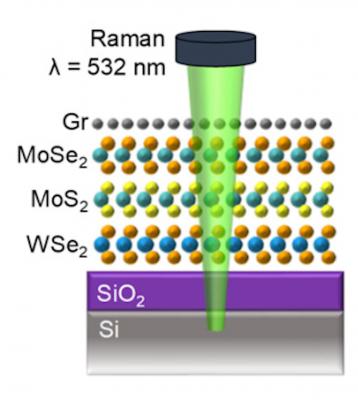Researchers from Stanford, NIST, Theiss Research and several others have designed a new heat protector that consists of just a few layers of atomically thin materials, to protect electronics from excess heat.
 Cross-section schematic of Gr/MoSe2/MoS2/WSe2 sandwich on SiO2/Si substrate, with the incident Raman laser
Cross-section schematic of Gr/MoSe2/MoS2/WSe2 sandwich on SiO2/Si substrate, with the incident Raman laser
The heat protector can reportedly provide the same insulation as a sheet of glass 100 times thicker. We’re looking at the heat in electronic devices in an entirely new way, said Eric Pop, professor of electrical engineering at Stanford and senior author of the study.
To soundproof homes, people often install multi-paned windows. We adapted that idea by creating an insulator that used several layers of atomically thin materials instead of a thick mass of glass, said postdoctoral scholar Sam Vaziri, the lead author on the paper.
The researchers used a layer of graphene. They then added three other similar materials, each only three atoms thick, to create a four-layered insulator that was just 10 atoms thick. The end result is an incredibly thin insulator that is effective because the atomic heat vibrations are dampened and lose much of their energy as they pass through each layer.
Now, the researchers are seeking some form of mass production technique to deposit atom-thin layers of materials onto electronic components during manufacturing. However, what they really hope to achieve someday is the control of the vibrational energy inside materials.
As engineers, we know quite a lot about how to control electricity, and we’re getting better with light, but we’re just starting to understand how to manipulate the high-frequency sound that manifests itself as heat at the atomic scale, Pop concluded.

